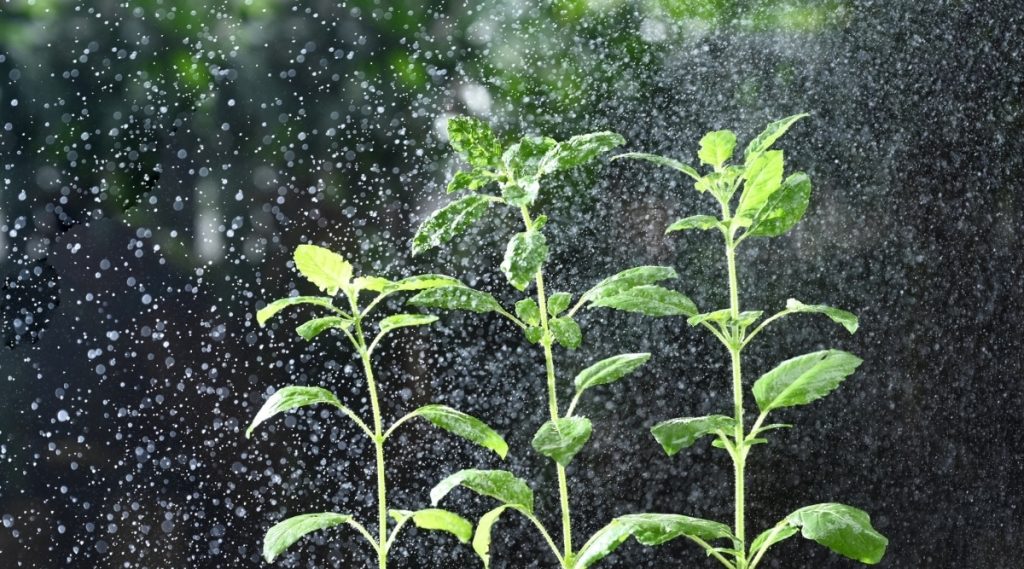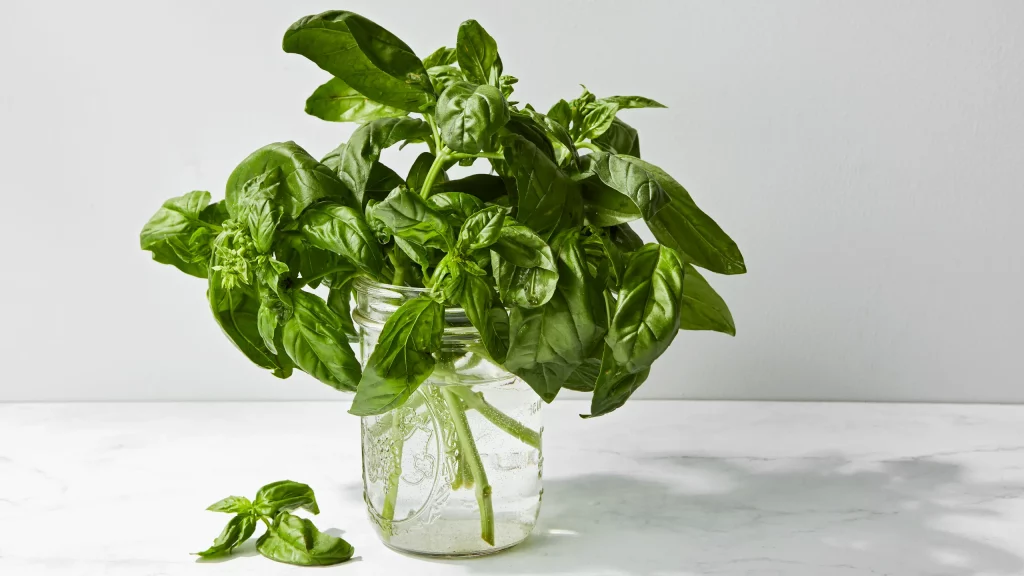Nurturing an Abundant Basil Plant
If you have the intention of growing basil, it’s highly likely for culinary purposes. Basil holds a prominent place among the most sought-after and extensively utilized herbs in the culinary world. Having a fresh basil plant at home will undoubtedly infuse a vibrant flavor into any dish you prepare.
Whether you choose to cultivate basil indoors or outdoors, there are specific measures you can take to promote the desired bushy growth of beautiful, fresh basil leaves. This comprehensive article focuses on cultivating flourishing basil plants!
We have explored numerous aspects of caring for basil plants, so ensure that you familiarize yourself with all the potential tips and tricks for maintaining optimal basil health after reading this article!
Intriguingly, we need not expound upon the reasons for desiring a healthy basil plant. The healthier it is, the more leaves it will produce, providing an array of delightful possibilities for culinary applications.
Growing basil in your garden also benefits the surrounding wildlife and your overall garden health. Basil leaves serve as natural deterrents against unwanted insects while attracting beneficial pollinators. Here are a few additional ways to employ basil in your kitchen:
Prepare pesto!
- Craft basil flower vinegar.
- Enhance a cocktail as a garnish.
- Spruce up a pasta dish with basil garnish.
- Create dried basil.
- Construct a delectable Caprese salad.
Methods to Foster Bushy Basil Growth

Experienced gardeners will assert that the most effective way to promote basil growth is to make use of it! Pruning basil extensively encourages the growth of additional leaves. The three primary methods for stimulating bushy growth are pruning, fertilizing, and flower removal.
Pruning Basil
Pruning basil holds significant importance for various reasons. Not only does it contribute to the plant’s overall health and growth, but it also prevents flowering.
Basil, being an annual plant, signals the end of its life cycle once it begins to flower. At this stage, the plant diverts its energy from leaf production towards seed production.
To extend your plant’s growing season, regularly prune the tops of the stems to discourage flowering and prune the stems to promote branching. Prune basil when the young plant reaches a height of 4-6 inches and possesses at least 4 sets of true leaves.
Using either your fingers or small scissors, trim just above the uppermost leaf node, which is the juncture of the leaf stem and the plant’s main stem. At this location, you may notice two tiny leaves sprouting.
Upon trimming the upper leaves, these tiny leaves will continue growing, giving rise to new separate stems. This technique ensures the development of numerous branching stems. Within 3-4 weeks, these new branches will boast fresh true leaves ready for harvest.
Watering Basil

Fertilizing Basil
Fertilizing basil serves as an excellent means of encouraging bushy growth. High nitrogen fertilizers prove particularly effective in promoting leafy growth.
Different fertilizers serve varying purposes, such as encouraging flowering, aiding edible plants, or facilitating leaf growth. Apply 1/3 cup of high nitrogen fertilizer every few weeks, and observe how new leaves rapidly emerge. These leaves will mature into harvest-ready true leaves within a short span.
Removing Flowers
As previously mentioned, once basil flowers, the plant shifts its energy towards seed production, thereby halting foliage growth. This process is known as bolting, resulting in the leaves becoming bitter.
To prevent this, it is crucial to prune any flower buds before they develop further. In the event that you miss the opportunity to prune a flower bud, be sure to harvest as many leaves as possible. Subsequently, allow the plant to go to seed and harvest the seeds for propagation of new plants.
Storage Options for Basil

With your flourishing basil plant yielding an abundance of fresh leaves, you may find yourself overwhelmed with the surplus. While garnishing pasta dishes straight from the plant can only go so far, you must explore methods to preserve the leaves effectively.
Pesto
Pesto is renowned for its delicious taste, and interestingly, it naturally preserves itself to some extent. Olive oil, a primary component of pesto, serves as a natural preservative alongside parmesan, pine nuts, and copious amounts of garlic.
By preparing pesto, you can refrigerate it for 3-4 weeks before any signs of spoilage occur. For prolonged preservation, store the tightly sealed mason jar in which the pesto is contained.
Dried Basil
Drying basil constitutes another exceptional method of storage. Although dried basil may possess a slightly diminished classic flavor and reduced aroma, it can essentially last indefinitely when stored in your pantry.
After harvesting basil leaves, simply allow them to dry in a warm, well-ventilated area for several days. Once dry, crush the leaves and store them in a small jar.
Cool Storage
Alternatively, you can extend the lifespan of your fresh basil leaves. To achieve this, store them in a dry container within the refrigerator.
Line both the top and bottom of the container to absorb any excess moisture that may be trapped, thus delaying leaf browning.
This remarkable technique applies not only to basil but also to other leafy greens, providing an effective means of extending their shelf life. To avoid waste, you may substitute a clean hand towel, replacing it every few days to maintain the desired effect.
Popular Basil Varieties
Green and purple basil flourishing side by side in orderly rows
Ocimum basilicum, commonly known as sweet basil, serves as the primary species from which various cultivars and varieties are derived.
Sweet Basil: As the most prevalent variety of basil, Ocimum basilicum possesses a sweet and spicy flavor. Typically growing between 8 to 20 inches tall, it represents a splendid herb used for its fresh leaves.
Lemon Basil: Also referred to as Thai basil, lemon basil features prominently in numerous Asian cuisines due to its distinctive citrus undertones. It is recognizable by its narrow, serrated green leaves, frequently employed as a fresh garnish.
Genovese Basil: If you desire an abundance of leaves, Genovese basil is the ideal choice. Nicknamed “bush basil” due to its vigorous growth, it can exceed 3 feet in height. This variety showcases large leaves, some reaching lengths of over 3 inches. Its flavor leans more towards sweet than spicy, making it a popular choice for pesto and Caprese salad.
Purple Basil: Possessing stunning foliage, purple basil is often used fresh for its beautiful color. Its narrow, serrated leaves exude the classic basil flavor.
Frequently Asked Questions
Where is the optimal location in the garden for growing basil?
The best spot to cultivate basil in your garden is contingent upon the average temperature during the warmest months.
In hotter climates, basil plants prefer morning sun and partial shade in the afternoon. In milder regions, they can tolerate full-day sun exposure.
Furthermore, it is crucial for your basil plants to grow in well-draining, nutrient-rich soil. Enhance soil drainage and fertility by incorporating compost and sand.
Is it possible to initiate basil cuttings indoors?
Starting basil cuttings can be accomplished either indoors or outdoors. Two primary methods involve initiating cuttings in a cup of clean water or directly in potting soil. Following this, you may decide whether to transplant them into a new pot, maintaining an indoor or outdoor setting.
How can basil seedlings be kept in optimal condition?
Basil seedlings tend to be delicate. They are sensitive to fluctuations in both temperature and moisture levels. To keep basil seedlings happy, maintain consistent soil moisture and humidity by regular watering and misting.
Additionally, ensure that the seedlings are placed in an area devoid of excessive drafts or sudden temperature changes, as they are susceptible to such variations. Mature plants are less sensitive in this regard.
What are some tips for keeping basil plants content?
The primary key to ensuring basil plants’ contentment lies in maintaining moist soil. Adequate moisture is vital for basil health. Additionally, provide the appropriate amount of sunlight, regular fertilization, and avoid exposing them to abrupt temperature changes.
When is the ideal time to prune basil plants?
Pruning basil plants is beneficial year-round. Pruning is essential to maintain plant health, encourage bushy growth, and prevent flowering.
When can basil be planted outdoors?
To ensure successful outdoor basil planting, wait until the last threat of frost has passed. Basil is highly sensitive to cold temperatures and will not survive if exposed to frost before becoming well-established.
What are some common issues faced by basil plants?
Proper watering is a key concern when it comes to basil. Inadequate watering can quickly lead to downy mildew or root rot. Ensuring well-draining soil discourages root rot, as the plants dislike overly moist conditions. To prevent downy mildew, ensure leaves have proper airflow and do not retain excessive water droplets.
